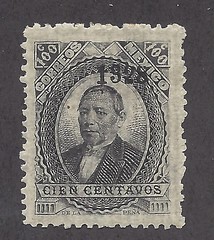
PREV ARTICLE
NEXT ARTICLE
FULL ISSUE
PREV FULL ISSUE
PROVENANCE AND PHILATELYForbes Magazine published an article by Richard Lehmann on provenance in philately, but his comments are quite applicable to numismatics as well. See
the complete article online. -Editor
In the simplest term, provenance means the earliest known history of something. In more modern usage it refers to the record of ownership of an object of art or antique as a guide to authenticity or quality. Since the 1950’s’ when marketing became a recognized business discipline, provenance has evolved into one of the most powerful marketing tools on the planet. The very term provides a cachet or stature to items with a value that is hard to define. It accounts for why investors will pay tens of millions of dollars for an artwork that most of us wouldn’t give a second thought to if offered to us for $20 at a flea market. In fact, finding such an item at a flea market becomes a part of its provenance because it makes such a good story. Philately is full of such stories. Provenance’s importance in philately has not been lost on the likes of auction houses. For high priced stamps they spend many hours and thousands of dollars putting together a history of rarities and then publishing book like catalogs, all in an effort to get two or more deep pocket buyers who feel a need to own the stamp into the auction room. The bidding then becomes a matter of ego rather than value, which is one reason buyers want to remain anonymous. More important is the fact that once a huge value for an item is established at a sale, that becomes a part of its provenance. If that buyer also has a recognized name, their ownership also becomes part of its legend. As you may surmise, provenance is part facts and part marketing. The very use of the word in describing a stamp immediately separates it from the mundane. It says, here’s something you can treasure for its rarity and because it has a story you can repeat to friends or in an exhibit. This brings me to the important question of how can a dealer or collector create provenance. The practice of developing provenance for a philatelic item may sound shady, it is anything but. When dealing with art, antiquities or stamps one needs talking points to close the sale at the best possible price. A factual provenance creates immediate value, but also, a value that carries forward and can actually grow with time. The history of the inverted Jenny stamps is a prime example where the story continues to grow over time as various copies take on a unique history, but add to the legend. This has grown to the point that the U.S. post office exploits it by printing a new series of high value inverted Jennies and markets them by mixing in some upright sheets to create a treasure hunt. Talk about exploiting provenance! To read the complete article, see: Wayne Homren, Editor The Numismatic Bibliomania Society is a non-profit organization promoting numismatic literature. See our web site at coinbooks.org. To submit items for publication in The E-Sylum, write to the Editor at this address: whomren@gmail.com To subscribe go to: https://my.binhost.com/lists/listinfo/esylum All Rights Reserved. NBS Home Page Contact the NBS webmaster 
|
